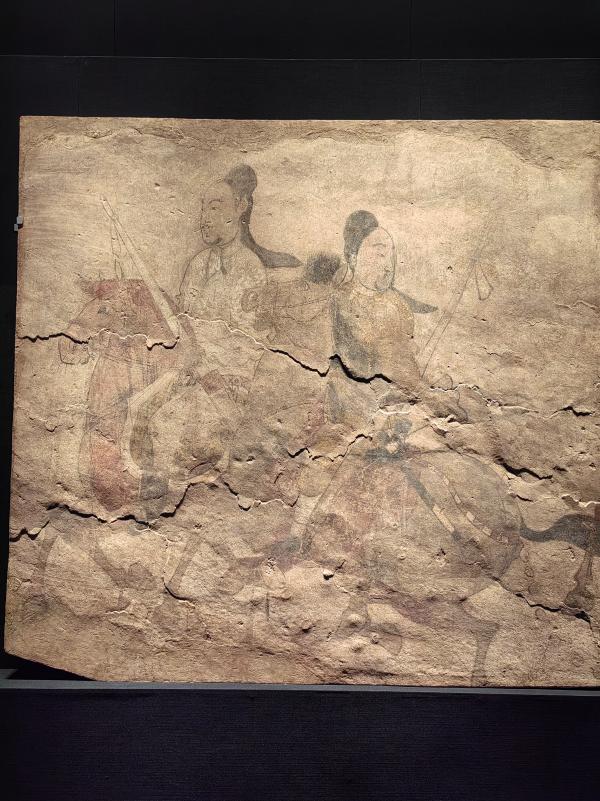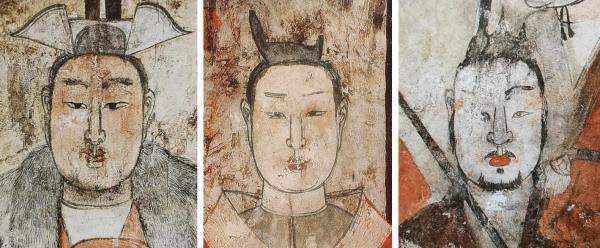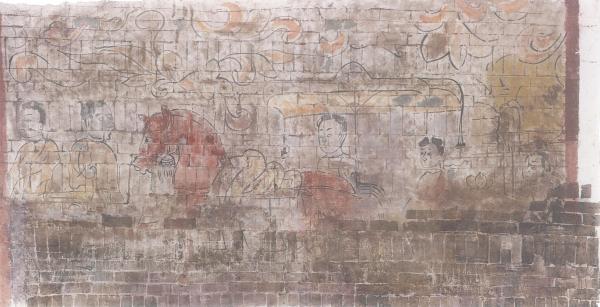
Tranalysis
The Northern Qi Dynasty was short. In general history books with political history or event history as the main content, they often mentioned a few strokes without much sense of existence. Most of the public's impressions of this dynasty are that the monarch is muddled, the country's politics is chaotic, and some secret palace news that is inconvenient to serve at the table. The first time I learned that Northern Qi was reading idiom story books when I was young. I read the saying "It is better to be broken than to be safe". I felt heavy and didn't have a good impression of Northern Qi from the starting point of cognition. After starting professional study, I realized that it was just one side of a coin. If I looked at the other side and looked at the field of culture and art, the situation would be very different. As early as eighty years ago, Chen Yinke had already revealed the cultural high position of Kanto in his "A Brief Comment on the Origin of the Sui and Tang Dynasties System", pointing out that "since Wei Xiaowen, the orthodoxy of culture has still been in Shandong, far away from Jiangzuo and Southern Dynasties, and has been the focus of costumes, ceremonies and music." He emphasized the profound prosperity of Confucian classics and literature in the Northern Qi Dynasty. In addition, in the history of the development of ancient Chinese art, the Northern Qi Dynasty was a dazzling dynasty. Art creation was expressed in many forms. Traditionally, research mainly relied on literature and limited works of calligraphy and painting passed down or copies of later generations. The focus was limited to the history of calligraphy and painting. The development of field archaeology and new concepts of art history provided new materials and perspectives. We were able to examine the overall development of Northern Qi art from a broader perspective. There are two prominent areas: first, the grotto groups preserved to this day such as Xiangtang Mountain and Tianlong Mountain, as well as Buddhist stone statues unearthed in Longxing Temple in Qingzhou and Beiwuzhuang in Yecheng, which showcase the extremely high level of Buddhist art in the Northern Qi Dynasty; Second, a considerable number of Northern Qi tombs painted with colorful murals have been resurfaced through the hands of archaeologists, including many masterpieces with magnificent scenes and vivid charm. What this article wants to discuss is how to enter the world of Northern Qi tomb art through these archaeological materials, and then provide some new clues for understanding the history of Northern Qi and even the history of the Northern and Southern Dynasties.
a
Judging from the available materials, the practice of wall decoration in tombs first appeared in the Western Han Dynasty, and by the Eastern Han Dynasty, it formed the first peak in the history of the development of Chinese tomb murals. However, at that time, no matter painted murals, stone reliefs or portrait bricks, it was widely absorbed by the upper strata of the ruling clique. Instead, it was a funeral custom popular among middle and lower-level officials and wealthy families in specific areas. Emperors and princes had cemetery buildings, mass burial pits, yellow sausage inscriptions, jade ornaments and other funeral symbols that reflect their status. It can be said that although the images of tombs in the Han Dynasty are rich and wonderful, they are not particularly important.
During the Wei and Jin Dynasties, the social atmosphere changed greatly. Due to the government's advocacy of "thin burials," tomb murals were once rare in the Central Plains and were not revived until the Southern and Northern Dynasties in the fifth and sixth centuries. There were differences and similarities in the wall decoration of tombs in the north and south. From the perspective of decoration form, mold-printed portrait bricks are the mainstream of images of tombs in the south. Large-scale tombs in Nanjing use dozens or even hundreds of portrait bricks to form large portraits, and northern tombs are painted directly on the walls. Judging from the level of tombs, the southern tombs found with large-scale brick paintings are all tombs of emperors of the Southern Dynasties, indicating that this tomb art form is a product of the funeral system. Coincidentally, tombs of the Northern Dynasties have also shown a trend of gradual institutionalization. The identity levels corresponding to the mural tombs found in the Pingcheng and Luoyang periods of the Northern Wei Dynasty are not clear, but there are signs that high-level tombs are decorated with murals. The owners of the Eastern Wei mural tombs in southern Hebei are eye-catching, such as the tomb of Yuanhu, the governor of Xuzhou in the fourth year of Tianping in Ci County (537), the tomb of Sikong Li Xizong in the second year of Wuding of Emperor Zan (544), and the tomb of Ru Rulin and Princess Lu Chidilian in the eighth year of Wuding in Ci County (550). They are all relatives of the emperor.
At present, there are nearly 30 mural tombs that can be determined and presumed to be from the Northern Qi era, and epitaph have been found in most tombs, so the situation is more clear. Judging from the geographical space of tombs, there are several obvious concentration areas: 1. Near Yecheng, the capital, there have been excavations at the tomb of Yao Jun, the general of the hussars and the governor of Huaizhou in the third year of Tiantong in Ci County, Hebei Province (567); the tomb of Gao Xiaoxu, the king of Xiucheng, around the third year of Tiantong (567); the tomb of Princess Bichuni of Jinan (Li Nansheng) in the first year of Wuping (570); the tomb of Gao Huan, the 14th son of Gao Huan, the left prime minister, and the king of Wenzhao; the tomb of Fan Cui, the sixth year of Wuping in Anyang, Henan Province (575); the tomb of General of the Hussars, the third department of Kaifu Yitong, and the governor of Liangzhou. The tomb of Yan Yuguang, the concubine of Emperor Wenxuan in the seventh year of Wuping (576), and the tomb of Wanzhang in Ci County, which is presumed to be the tomb of Gao Yang and Wuning (560), the founding emperor of the Northern Qi Dynasty; 2. Near Jinyang, the capital city, there are the tomb of Han Zunian, the General and King of Martial Arts in the fourth year of Tiantong in Taiyuan (568); the tomb of Lou Rui, the Right Prime Minister and King of Dong 'an in the first year of Wuping (570); the tomb of Xu Xianxiu, the Taiwei and King of Wu' an in the year of Wu Bandits (571); the tomb of Xi, the governor of the six prefectures of Beisi Prefecture and the three divisions of Yitong in the third year of Wuping (572); and the tomb of Huiluo, the governor of Dingzhou, the Duke of Taiwei, and the King of Shunyang (562). As well as the mural tomb of the No. 1 Thermal Power Plant in the southern suburbs of Taiyuan, which is presumed to belong to the Northern Qi Dynasty. Although the specific age of the tomb in Jiuyuangang in Xinzhou north of Taiyuan is uncertain, academic circles agree that it belongs to the late Northern Dynasty, or it can also be late to the Northern Qi Dynasty. There is also the mural tomb of Shuozhou Shuiquanliang, located in the northern Jin Dynasty and presumed to be the local military and political chief in the late Northern Qi Dynasty; 3. There are also many discoveries in Shandong, including the tomb of General Wei Lie of the Eastern Wei Dynasty and Chief Shi Cuifen of Xingtai Prefecture in the first year of Tianbao in Linqu (550), the tomb of Gu Daogui, the county magistrate of Zhu 'a in the year of Wu Bandits in Jinan (571), the tomb of Cui Bo, the chief historian of Xuzhou in the fourth year of Wuping in Linzi (573), and the mural tomb of Dongbaliwa in Jinan, which is presumed to be the Northern Qi Dynasty. In addition, the more important mural tombs of the Northern Qi Dynasty include the Shangshu of the Temple Department in the Third Year of Tiantong in Pingshan, Hebei Province (567), the tomb of Cui Ang, the governor of Zhaozhou, and the Northern Qi tomb of Wangfucang, Beijing.
The locations where the above-mentioned tombs were found are extraordinary. Yecheng and Jinyang were the two most important political centers of the Northern Qi Dynasty. The Qingqi area where Shandong is located was the place where the Chinese tradition in the north was deepest at that time. It gathered here for generations. The content of the epitaph directly shows that almost all of these tomb owners have certain political identities. Many people are recorded in the Book of Northern Qi and Northern History, including many dignitaries and officials, several people with princes, and the Wanzhang Tomb is even presumed to be the tomb of the emperor. These circumstances show that the Northern Qi Dynasty directly inherited the funeral tradition of the Eastern Wei Dynasty and incorporated murals, a popular culture in the Han Dynasty, into the scope of the system, as a standardized allocation of high-level tombs, with a strong hierarchical nature.

Floor plan of Xu Xianxiu's tomb

Section of Xu Xianxiu's tomb
second
The shape of high-level tombs in the Northern Qi Dynasty is a single-chamber tomb with a sloping tomb path. The tomb chambers are mostly built of bricks and have a square plane. The wall surface from the entrance of the tomb path to the deepest part of the tomb chamber is often covered with colorful murals, forming a long underground gallery. The murals of the Wanzhang Tomb in the light of the tomb path reach 320 square meters. The murals of Xu Xianxiu Tomb have the largest area, reaching 330 square meters. The murals of Jiuyuangang Tomb and Lou Rui Tomb are about 250 square meters and 200 square meters respectively. A mural of this scale obviously requires an overall design and must be completed collaboratively by members of the creative team. The team includes both skilled master painters and apprentices and novices, who undertake different processes. The general process of mural painting is: First of all, Apply grass mixed with mud and white ash surface on the tomb wall to form a smooth and smooth ground layer. Generally, the manuscript is started with ink lines, charcoal strips or bamboo sticks, and generally relies on powder copies, and then finalize, coloring and key parts are carried out in turn. Re-checking and other links.
From the spatial layout, the Northern Qi tomb murals can be roughly divided into two parts: tomb murals and tomb murals. The former belongs to a semi-open space, the latter belongs to a closed space. There are also holes and corridors that connect the two. The mural creation team adopted different composition forms and drew images of different themes based on the attributes of different spaces, but they also had intrinsic logical connections with each other and could be interpreted as a whole.
Making full use of the space of the tomb path to draw images was an invention of tombs in the Northern Dynasties. Although the Han tombs generally had tomb paths, no images were drawn. This change means that the content of the picture that originally existed only in the tomb chamber began to expand outward, forming a new image system. The tomb murals are painted on both sides of the wall. The main content is travel ceremonial, immortals and divine birds and exotic beasts, with additional decorative elements such as lotus flowers, flowing clouds, and honeysuckle. Large-scale tombs are often buried very deep, and the sloping tomb path is very long. The side walls of the tomb path become the largest painting space in the tomb. For example, the largest Wanzhang tomb path has a slope of 14° and a length of 37 meters. Jiuyuangang tomb path has a slope of 15° and a length of more than 30 meters. There are two forms of image layout. Lou Rui's tomb and Jiuyuangang's tomb adopt a horizontal column drawing technique. The former is divided into three columns, while the latter has as many as four columns. Most tombs are not divided into columns like Wanzhang's tomb and Xu Xianxiu's tomb. Instead, images are drawn from the outside to the inside along the slope of the tomb path, and from high to low to form a queue.

The mural on the west wall of Lou Rui's tomb road was first exposed, and the column structure can be clearly seen.
The themes and layout of the murals on the east and west walls of the Jiuyuangang Tomb are similar, but the specific content of the pictures is different. The first layer mainly shows the divine birds and exotic beasts, dragon and crane immortals, Lei Gong Fengbo, etc. distributed in the flowing clouds. All gods are in a rapid movement pace, and many scholars have linked them to the records of "Shan Hai Jing"; the second layer of murals includes many pictures of hunting in the mountains, and may also belong to the horse trade; The third and fourth floors represent the "travel" and "return" of the honor team. The upper and middle layers on the right wall of Lou Rui's tomb are painted with camel groups, riders, and saddle horses moving from the inside out. Most people ride on horses. The upper and middle layers on the left wall are painted with soldiers, horses, camel groups, etc. moving from the outside to the inside. Many people walk forward, and there seems to be a difference between "travel" and "return". The lower layers on both sides of the wall are mainly painted with propaganda scenes. These themes have a strong color of northern life. If these columns are connected up and down, and then the images on the two side walls are connected left and right, it is like appreciating a slowly unfolding scroll. From this point of view, the so-called difference between "travel" and "return" may be more related to the pink form. This drawing method is easier for painters to play, but it does not match the basic structural feature of the slope shape of the tomb road.
The front ends of the two sides of the tomb path of Wanzhang Tomb are painted with green dragons and white tigers. This is not common in other Northern Qi tombs and may only be owned by the highest-level tombs. Behind the dragon and tiger, the lower part of the tomb path are painted with fifty-three people holding various ceremonial equipment. There are as many as 106 people on the two walls, forming a vast honor guard. The upper part is painted with divine birds and exotic beasts, lotus flowers, flowing clouds, etc., which seem to represent the world and the immortal world respectively. There are also large lotus flowers painted at the bottom of the tomb path, as if laying a carpet. Except for the fact that the tomb path of Xu Xianxiu's tomb is not painted with dragons and tigers, the other image elements on the wall are similar to those of the Wanzhang Tomb. A total of 52 ceremonial figures are painted on both walls, and the scale is reduced to half. This should reflect the difference in the political identity of the tomb owner. The size of these ceremonial figures is close to life-size. During the burial process, relatives and friends who escorted the coffin into the tomb chamber will find that they can always look at the ceremonial figures on both sides. The designer seems to have built an underground world that is seamlessly connected to the real space, and the practice of drawing images in columns represents two different concepts and demonstrates the richness of tomb space design during the Northern Qi Dynasty.
The holes, patio, corridor and tomb door are generally covered with color paintings. In particular, the tomb door, which serves as the transitional space between the tomb passage and the tomb chamber, is a key decorative area. Large portraits are often drawn on the light wall above the tomb door. The wall of the Wanzhang Tomb is painted with a rosefinch and a monster on the front, facing people walking into the tomb. Mani pearls, lotus flowers, etc. are painted above the tomb door of Lou Rui's tomb, which has a strong color of evil spirits and protection. A "Gate Tower Map" with a height of 3.25 meters and a width of 3 meters to 3.3 meters is drawn above the tomb door of the Jiuyuangang Tomb, as if to imply that the deceased will not enter a tomb, but a building with the meaning of a fairy world. This is to use artistic means to realize the transformation of the meaning of space. The images of gate officials were painted in the corridors of some tombs, which also strengthened the "architectural nature" of the tombs.

The "Gate Tower Map" of Jiuyuangang Tomb now hidden in Shanxi Museum
The tomb murals are painted on the four walls and the tomb roof. The image themes and layout in this space are highly consistent, especially the tomb owner couple on the main wall (back wall) and the ox cart and saddle horses on both sides constitute the most stable image combination. For example, the best-preserved tomb of Xu Xianxiu is an example: The front image of the tomb owner and his wife sitting under the draperies and on the bed is drawn in the center of the main wall of the tomb. Several attendants, musicians and umbrella fans stand on both sides, forming a banquet scene. Travel plans with oxcarts and pommel horses as the center are drawn on both sides, but there is no one in the carriage or horse. The intention should be to prepare for the soul of the tomb owner and his wife. The front wall where the tomb door is located is painted with a ceremonial guard holding a three-streamer flag. All of the above are located. In the lower part of the tomb wall, the line of sight of strangers is basically at the same level. It is also on the same level as the characters in the corridor and tomb path. Above the tomb door are two divine beasts in a diving posture, and a star chart is painted on the top of the tomb. The image configuration of the four walls of the tomb of Lou Rui's tomb is basically the same as that of Xu Xianxiu's tomb, except that the four gods and Lei Gong are painted on the upper part of the four walls, and the twelve gods and other animal images are shown in the upper circle, which not only further strengthens the spatial structure within the tomb, but also gives time meaning.
Taken individually, these images in the Northern Qi tombs are all long-standing themes. For example, the portraits of the couple sitting together in Zhengbi appeared widely in the Pingcheng era of the Northern Wei Dynasty. The images of the Four Gods and Lei Gong were of origin, but they were selected to form a fixed combination of layout and composition, which was completed in Yecheng, the capital of the Eastern Wei and Northern Qi Dynasties, and had an impact on other key areas represented by Jinyang, the other capital. Two worlds appeared in the tomb. One was the world where a huge guard of honor surrounded the tomb owner and his wife, and the other was the immortal world where divine birds and exotic beasts flew among lotus flowers and flowing clouds. Although scholars still have differences on the historical positioning of tomb murals in the Eastern Wei and Northern Qi Dynasties, they agree that the formation of a unified appearance is mainly restricted by the system and is very different from the diverse appearance of Han tomb murals. Therefore, some scholars are summarizing these characteristics. On the basis of this, the term "Ye City Regulation" was put forward. According to the available materials, the origin of the institutionalization of images may be traced back to Luoyang, and was sometimes influenced by the Southern Dynasties. The Eastern Wei Dynasty was in the formation stage of "Ye City Regulation" and was not determined until the Northern Qi Dynasty. If we make conservative speculation, we can narrow it to the late Northern Qi Dynasty represented by Lou Rui's tombs and Xu Xianxiu's tombs.

Image of the main wall of Xu Xianxiu's tomb
three
High-level tombs are not only transcendental spaces in imagination, but also political spaces in reality. During the Northern and Southern Dynasties, painting, an art form, was incorporated into the category of national funeral etiquette and hierarchy, and there was a close connection between art and politics unseen in previous dynasties. On the one hand, this reflects that both the north and south no longer follow the concept of thin burial in the Wei and Jin Dynasties and have embarked on the path of thick burial again. On the other hand, it is also closely related to the rising status of painting art. The Wei, Jin and Southern Dynasties were an era when literature and art became conscious. During this period, the development of art also showed a magnificent new atmosphere. A large number of professional painters appeared. They had a high social status. Painting and calligraphy became the embodiment of the talents of aristocratic children. It is their identity card, and it is also valued and loved by the royal family. In the past, discussions in this regard mostly focused on the Six Dynasties in the South. In fact, the painting of the Northern Dynasties cannot be ignored, among which the Northern Qi Dynasty achieved the highest. Zhang Yanyuan of the Tang Dynasty records a total of ten Northern Qi painters in his "Famous Paintings of the Past Dynasties", while there was only one person in the Northern Zhou Dynasty during the same period. Yang Zihua, the most famous painter in the Northern Qi Dynasty, was known as the "Saint of Painting" at the time; Zhan Ziqian, famous for his "You Chun Tu", is generally considered to be a painter of the Sui Dynasty, but he had already made his mark in the Northern Qi Dynasty; Cao Zhongda from Central Asia created a Buddhist painting style in which dense thin lines express the pleats of clothes close to the body. The word "Cao Yi Out of Water" aroused infinite reverie in later generations. However, these are only associations that remain on paper, because the paintings of famous Northern Qi artists that survive to this day are almost blank. The earth does not love treasures, and the continuous excavation of tomb murals has refreshed people's understanding of sixth-century paintings. Some high-level works have made researchers pay attention to the possible connections between them and famous artists and famous paintings.
The characters and saddles painted in the tomb path of Lou Rui's tomb are exquisite, with smooth lines and beautiful colors. They are recognized as the highest level of Northern Qi painting seen so far. There are many "famous scenes" in the picture that today's audience is talking about. For example, two guides are painted in the middle fence on the west wall of the tomb path. One of them rides a green pommel horse. He restrained the reins and turned around to look back at his companions. The horse he sat on was obviously scared, with its head high, its eyes wide, and its tail raised. It even pulled out a string of feces! The painter's capture of this vivid moment not only shows that he is familiar with the living habits of horses, but also shows that he is deliberately breaking the repetition of the picture. He is thinking not only about what to draw, but also how to draw. This is not what future generations call "artistic consciousness". Based on the level of painting style and Lou Rui's political identity, many researchers have linked the tomb murals with Yang Zihua, a court painter who painted "saddle horses and figures for victory". They believe that they have the characteristics that Yan Liben praised Yang Zihua's paintings as "simple and beautiful". Therefore, they have put forward the view that the murals are either Yang Zihua's handwriting or can represent the style of Yang Zihua's school.

The pommel horse figure in the middle fence of the west wall of Lou Rui's tomb, when the horse on the right side was startled, pulled out a string of feces.
The "Fu to the God of Luo", rumored to be Gu Kaizhi in the Eastern Jin Dynasty, is a classic that is familiar to people today. The first part of the scroll shows Cao Zhi, wearing a wide robe and large sleeves, being supported by his left and right attendants, walking from right to left. The composition of this group of characters can also be seen in the travel map of the tomb owner painted on the west wall of the tomb of Cui Fen. The two are exactly the same, and there is no coincidence. Similar pictures can also be seen in the painting of the Northern Wei Dynasty emperors and empress praying to Buddha in Binyang Middle Cave in Longmen Grottoes. Although all tomb murals are unsigned and there is no relevant record in the literature, so far there is no evidence that can directly correspond the murals of a certain tomb to a certain great painter, but we can clearly see that a style and a painting method appear repeatedly on different carriers, that is, flow among different creative groups. Some people may think that the images of tombs in the Northern Qi Dynasty have embarked on a stylized path and suppressed individual creation. However, if we look at the development track of Chinese art, it was precisely during this period that the concepts of famous artists and famous works emerged, and the creations of great artists became fashion benchmarks and material resources, and were then widely copied and became a classic schema. This inevitably reminds people of the "transfer and model writing" among the six methods mentioned in Xie's "The Record of Ancient Paintings" and Dai Kui's description of "being good at drawing sages and being the model of hundreds of craftsmen".
four
As mentioned above, the creation of large-scale tomb murals is the result of teamwork and requires a clear division of labor. However, although each process is based on previous work, intentional adjustments and inadvertent mistakes often occur. As a collective and diachronic product, the final effect of tomb murals often deviates from the original design. Some examples from the murals of tombs in the Northern Qi Dynasty provide valuable clues for us to understand the specific practice of the funeral system at that time.
The mural of Xu Xianxiu's tomb is not complete, but there are many flaws in detail when the overall effect is good. The most serious mistake is that the wife of the tomb owner was painted with two right eyes. Although the ink color of the two right eyes is difficult to distinguish, when observed together with the left eye, it can be seen that the right eye, which is low in position, small in size, and has a half-moon shape, was drawn first. The main function seems to be for positioning. The left eye has not been drawn at this time, but was redrawn during the finalization. One is more slender, The right eye in the shape of a willow leaf and the left eye in a symmetrical position and consistent shape is obviously a technical adjustment in mural creation, but this change occurred in the eye of the tomb owner's wife, which is unusual.
In the Northern Qi tomb image system, compared with the tomb path, the tomb image content is more regular and should be the most restricted by the system. The murals of Xu Xianxiu's tomb are a product of the sophisticated stage of the "Yecheng System". The construction of the tomb should have official intervention. The tomb owner painted on the main wall of the tomb is surrounded by as many as 24 male and female attendants and musicians, located at the center of the tomb. The end point of the axis should also be the focus of the funeral system. From the perspective of painting history itself, the portrait of the tomb owner can be classified into the category of figure painting, the earliest developed painting in traditional Chinese painting. During the Six Dynasties, figure painting reached maturity through the hands of many famous artists, with particular emphasis on the beauty of demeanor and emphasis on "Vivid spirit". Judging from the small number of Tang and Song Dynasty replicas handed down from the Six Dynasties, high-level paintings do pay attention to highlighting the personality characteristics of the characters, and the eyes are regarded as the "Adu object" that can best "convey the spirit" and are the most important position for painters. They should be cautious. So, why was Mrs. Xu Xianxiu's right eye drafting so hasty? Or why can this flaw be accepted by a family of dignitaries like Xu Xianxiu without being well concealed?
To answer the above questions, I would like to raise a question about these questions: Is the painter painting a female tomb owner? My answer is both and not that the portrait of the tomb owner belongs to a figure painting, but it is not a portrait like Mona Lisa. We need to realize that the tomb images are hidden in the dark, and their nature and function are different from the easel paintings for people to display and admire. There are three "Xu Xianxiu" in the tomb chamber of Xu Xianxiu's tomb. In addition to the image on the wall, there are also "Xu Xianxiu" recorded as the epitaph. The most important thing is that on the coffin bed between the portrait and the epitaph, there is also placed the tomb owner's body. Therefore, the portrait is only a necessary element to build this transcendental space. It only has symbolic meaning and does not have the uniqueness of function. It is not equal to the owner of the tomb, nor is it the embodiment of the owner of the tomb. If you compare the face shapes of the couple, you will find that they both have duck egg faces, with a full forehead, a straight nose, a deep recess in the person, a narrow mouth, and a rich lips. This is not the appearance of a couple, because the facial shapes of some musicians and attendants in the tomb are very close to them. Similar images can also be seen in Lou Rui and Shuiquanliang tombs. Especially the shape of the couple in Shuiquanliang tomb is simply a replica of Xu Xianxiu's tomb, which shows that the painters are not pursuing image realism. Instead, it creates an "idealized face" that reflects the aesthetic tendencies of that era.

Comparison of the facial images of Xu Xianxiu's tomb owner, couple and groom
The changes in Mrs. Xu Xianxiu's eyes gave us the opportunity to observe how the painting team of the tomb corrected themselves in the process of creating an "idealized face." If we compare the two right eyes of the tomb owner's wife with the eyes of other figures in the tomb murals, we will find that the half-moon-shaped right eye painted first is similar to the eyes of the musicians and attendants in the tomb, while the willow-leaf-shaped right eye painted is basically the same as Xu Xianxiu's eyes. I speculate that the two paintings were not done by the same painter, and the specific process may be as follows: The first painter drew eyes with the same shape for the tomb owner's wife and other characters, either based on the existing powder copy or his customary painting method. However, before the left eye of the tomb owner's wife could be drawn, the task was stopped, and another painter was responsible for the final processing of the facial images of the tomb owner and the couple. It can be seen from the round and smooth final facial outline of the tomb owner couple that the second painter is of a very high level. It is very likely that he believed that the eyes were a factor that highlighted the identity of the tomb owner and the couple, and drew willow shaped eyes for the two, which were more noble to him and more consistent with the identity of the tomb owner.
However, while "correcting the error", the painter did not try his best to remove the original lines, and did not seem to be worried about being questioned by the funeral family or the official after completing the project. This may be related to the environment of the tomb chamber. The murals were painted after the tomb was built. Before the tomb was closed, although the tomb chamber could be used for the staff to enter and exit, it was already a dark space and could only rely on oil lamps with limited illumination range. Make paintings. Similarly, supervision from funeral families or officials is limited by the condition that the tomb murals are not easy to view-and does not take into account all the details on the pictures.
Although the tombs of Situ and General Han Zunian were excavated, a considerable number of exquisite funerary objects matching their identities and status were still unearthed. However, the murals in the tomb chamber were extremely poor, with primitive brushwork, stiff lines, out of proportion, and dull expressions. It actually gave people the feeling of a child's simple brushwork, and it was directly drawn on a very crisp white mortar floor. The Shuiquanliang Tomb in Shuozhou "pressed" the horse team originally belonging to the murals of the tomb passage against the walls of the tomb chamber and corridor in a reduced size. The tomb murals of these two tombs also comply with the "Ye City Regulations". It can be seen that the so-called tomb system only stipulates the subject matter, content and basic composition of the tomb murals. As for what kind of painting team to hire and what style and level to paint, it is not within the scope of supervision. Different mourners attach different importance to tomb murals, which provides flexibility in actual operation. In this way, we do not have to carry the ideological burden of searching our brains to praise the ancients.

Copy of the mural on the east wall of Han Zunian's tomb
five
If we have the opportunity to walk into a Han tomb, we will see the following picture: the sun, moon and stars are painted on the top of the tomb, as if we are in a miniature universe. Looking at the four walls, you can not only see the extraordinary and refined world of immortals, but also find the bustling daily life. In the world of immortals, the two important gods, the Queen Mother of the West and the Prince of the East, are divided into two walls, each in charge of a heaven and earth. Among them, the Queen Mother of the West sits high on a mountain top, with the three-legged bird and the nine-tailed fox as envoys, and the jade rabbit that is tempering the immortal medicine. There are also dragons singing, spotted leopards playing, and toads dancing, presenting a magical and joyful scene. This is Kunlun, which the Han people yearn for. In addition, all kinds of agile immortals and feathermen, as well as various mythological beasts based on dragons, phoenixes, lions, tigers, horses, deer, turtles, and snakes, are galloping and flying in the clouds. Some mythological beasts are carrying immortals or tomb owners soaring to their ideal world. The portraits on real-life themes in the tomb are more extensive. For example, there are huge teams of chariots and horses traveling, which represent the status and glory that people expect to obtain. We will also see many images of ancient sages and filial sons and daughters, most of which are storytelling, giving people a strong sense of Confucian moral concepts, and can also be regarded as a collection of the entire knowledge and culture of the people at that time. It can be said that the people of the Han Dynasty gathered their dreams, ethics, knowledge, customs and other aspects into tombs. There is an important conceptual reason behind this: the people of the Han Dynasty did not have a fixed and unified imagination of the world after death. In fact, they could not determine where they would go after death, so they painted what they had and what they wanted to have on the tomb wall. Nothing was missing, to ensure that the tomb owner completed a time and space journey that he did not know where he would eventually go.
During the Northern and Southern Dynasties, especially the Northern Qi Dynasties, the distribution of murals in tombs was greatly expanded, and the format of the paintings was also greatly increased. The richness of the content was weakened compared to the Han Dynasty. There was a strong secular atmosphere and a significant hierarchical order. The main theme is the honor guard line that directly reflects the identity of the tomb owner, emphasizing a sense of order rather than the opposite sex of God. Even banquet scenes gave people a sense of strictness. This change may have a lot to do with the introduction and popularity of Buddhism. The Wei, Jin and Northern and Southern Dynasties were the historical stage when Buddhism gradually occupied the minds of Chinese people. Compared with Chinese local traditional thoughts, Buddhism provided a complete set of explanations for the world behind us. During the Northern and Southern Dynasties, a new phenomenon in cultural development was the upsurge in opening caves and statues, and the act of praying for the dead was increasingly transferred to Buddhist places. In the inscriptions of statues, you can often see such contents as "making statues for the deceased parents" and "making Maitreya statues for the seventh generation parents". In this sense, I think this kind of cave niche statues are similar to tombs. Alien, and the vigorous development of the former weakens the latter's innovative ability. Although people who accepted Buddhist ideas still invested a lot of financial and material resources in building tombs, the high-level tombs of the Sui and Tang Dynasties seen in archaeological excavations were still decorated with murals, mostly music and dance, banquets, attendants and other scenes, transforming into a graceful and even beautiful spring world, and the era when the imagination about the direction of life burst is gone forever.




